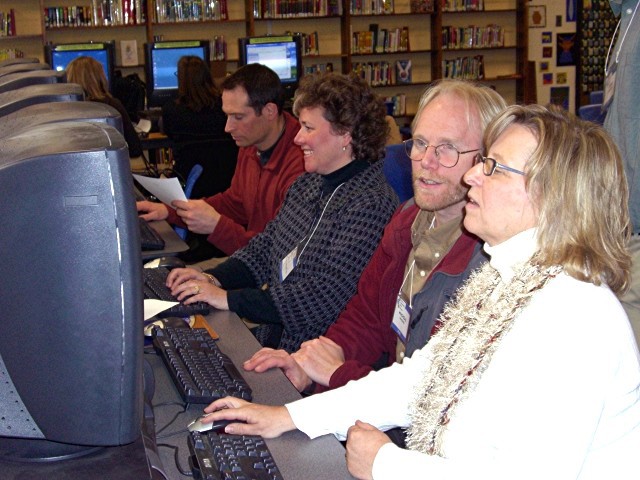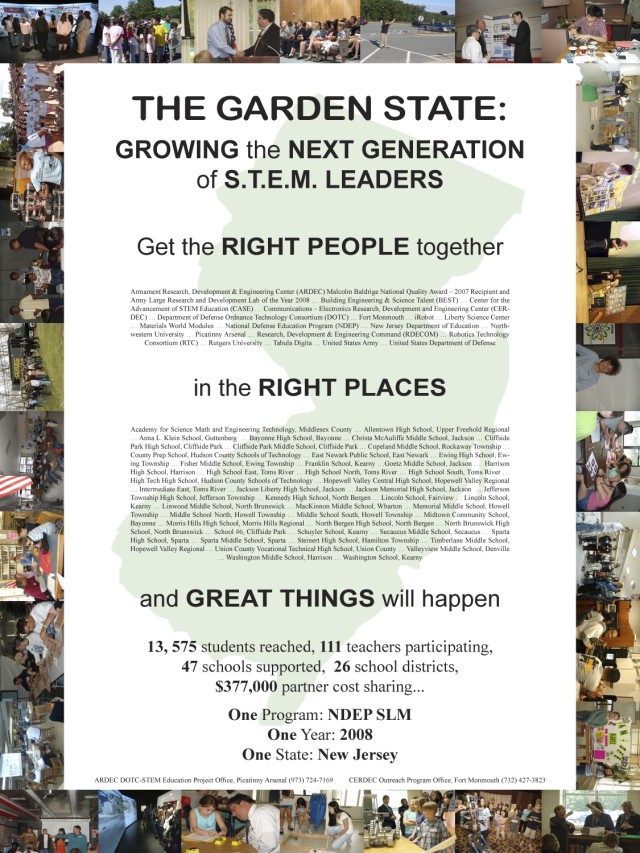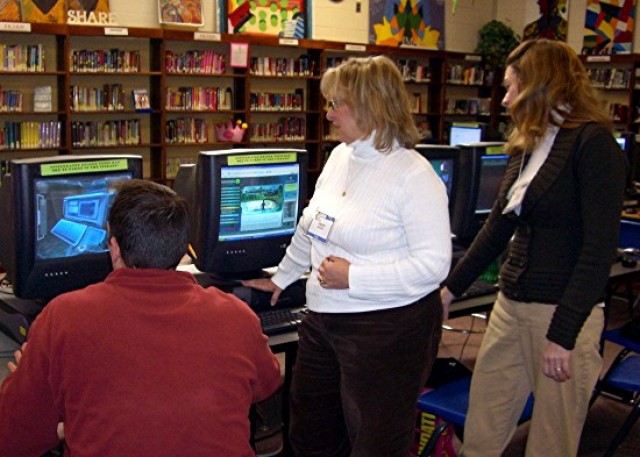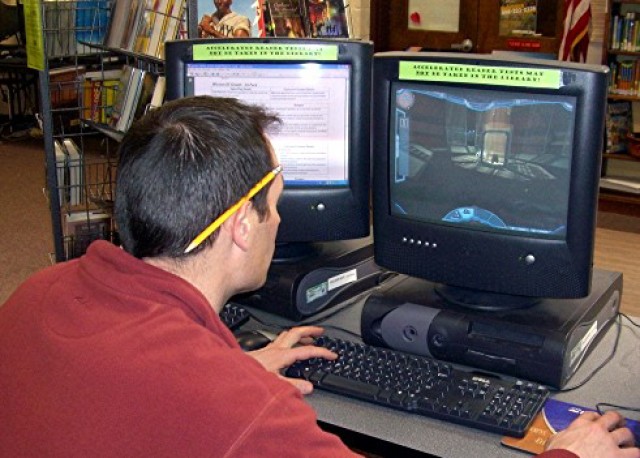PICATINNY ARSENAL, N.J. -- Two New Jersey Army installations and 26 local school districts have teamed up to help foster scientific and mathematic interests in AmericaAca,!a,,cs youth.
The Armament Research, Development and Engineering Center here, in conjunction with the Communications-Electronics Research, Development and Engineering Center at Fort Monmouth, is using a Department of Defense sponsored program called National Defense Education Program Student Learning Modules to inspire students to enter into science and engineering fields.
DoD officials are working with the schools because they want to maintain the quality engineers needed to sustain their technical laboratories, explained Ed Petersen, the education director for the Science Technology Engineering and Math Education project office here.
Aca,!A"WeAca,!a,,cre at great risk of losing our technological superiority in the world, particularly to countries like China and India where they are producing many more qualified scientists and engineers than we are,Aca,!A? Petersen said.
Through the program, Petersen said he hopes to introduce students to engineers and highlight the interesting aspects of science- and math-related careers.
In New Jersey alone, he said, the student learning modules program reached more than 13,575 New Jersey students in 2008, which is more students than the rest of the DOD labs combined.
A large part of the initiative is to make available to the schools a science program called Material World Modules.
The modules, which were created at Northwestern University in Illinois under a grant from the National Science Foundation, contain hands-on science activities that help students recognize engineering problems and develop their own solutions.
Teachers can choose from nine modules, including ceramics, bio-degradable materials and composites.
The most popular is the sports module, Petersen said. In this module, students can participate in projects such as designing and building a miniature golf course. Or, he said, in the composites module they can build a fishing pole that must be strong enough to hold the fish, but flexible enough to bend.
Besides making the modules available, ARDEC employees also train teachers and provide volunteer engineer and scientist support in classrooms.
Additionally, ARDEC engineers help as resources to the teachers, either by phone or by Internet, Petersen said.
Aca,!A"If a student has a particular question that is beyond the teacherAca,!a,,cs expertise, they can run it by one of our engineers here,Aca,!A? he said.
The face-to-face interaction with the engineers can also motivate the students who may or may not know anything about science and engineering, the military or Picatinny, Petersen said.
Aca,!A"With the scientists and engineers going into the classroom, you put a face on something that used to be abstract. And that makes a difference because they can hear real life-stories about what these people actually do for a living,Aca,!A? he said. Aca,!A"I think that our people can be very effective in schools based on the education they have themselves and their experiences working here.Aca,!A?
The program organizers also try to provide the school districts with interest-stimulating activities that can get the students engaged in the science field, Petersen said. Aca,!A"We donAca,!a,,ct force them to change their curriculum. We provide them with materials that supplement what theyAca,!a,,cre already doing.Aca,!A?
In addition to the Material World Modules, this year the DoD has made available an interactive, educational computer game to 10 school districts across the nation. The program, DimensionM by Tabula Digita, is a 3-D video gaming technology meant to provide schools another outlet for teaching pre-algebra and algebra 1 to students. The program allows students to play alone or compete against students in their class, district or even across the globe.
Currently, the Jefferson Township School district is the only New Jersey school district to have access to the games through DOD. The program will be made available to the district for two years, Petersen said.
Additionally, the program will be available on disc to students so they can use it on their familyAca,!a,,cs home computer, said Marius Petric, Jefferson Township district math supervisor.
The games are another way the district is trying to adapt instruction and make learning more stimulating for students, Petric said. Aca,!A"The graphics are really good, and I can bet the students will be interested in the activities.Aca,!A?
The districtAca,!a,,cs high-school and middle-school math teachers were recently trained on the program. Many of the teachers said they thought the option of competition would interest the students.
Aca,!A"I think if there is a possibility of winning involved, (students will) try to get as much practice as possible,Aca,!A? said Christina Hardin, an eighth-grade algebra 1 teacher.
High-school algebra teacher Steve Giessuebel agrees.
Aca,!A"It seems like kids love to compete. Any time you bring competition into the arena, itAca,!a,,cs to their benefit,Aca,!A? he said. Aca,!A"IAca,!a,,cm excited to see the impact in the following years and to see how it changes the level of performance when the students enter high school.Aca,!A?








Social Sharing